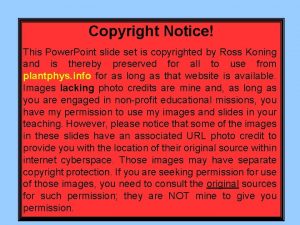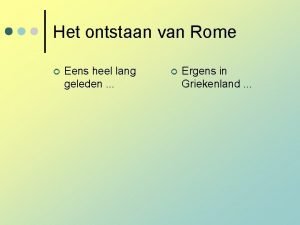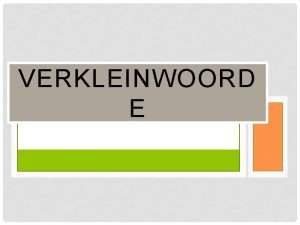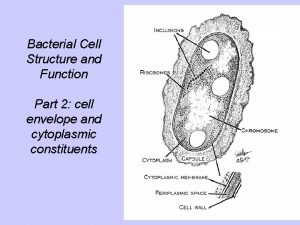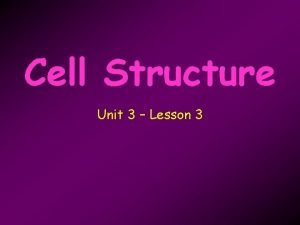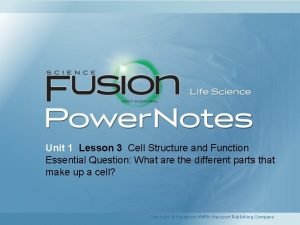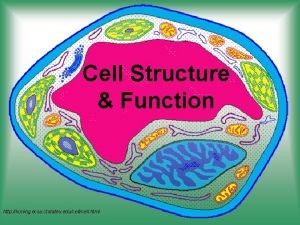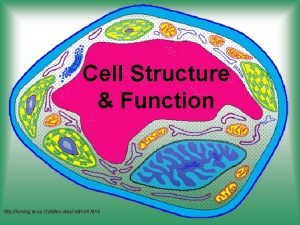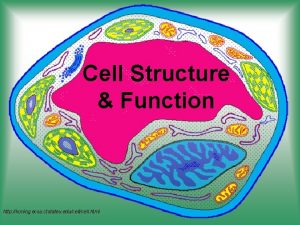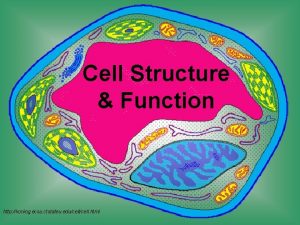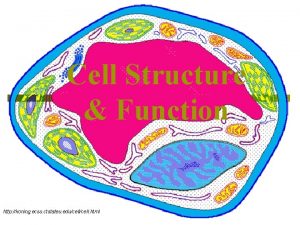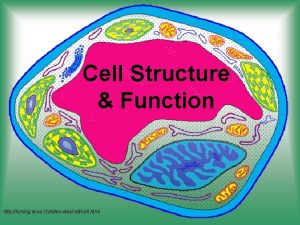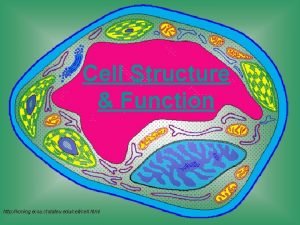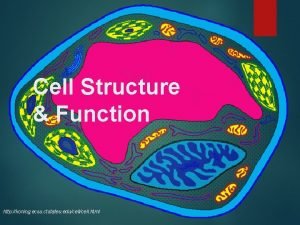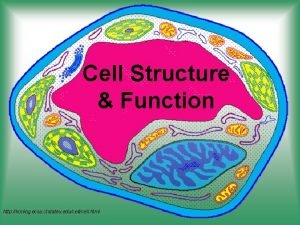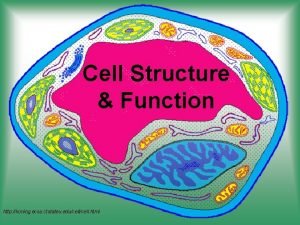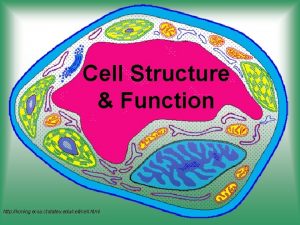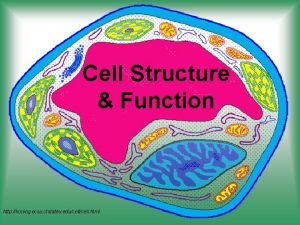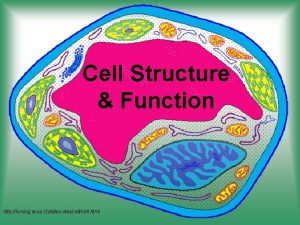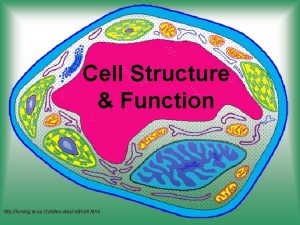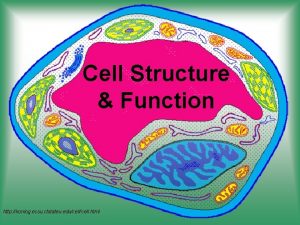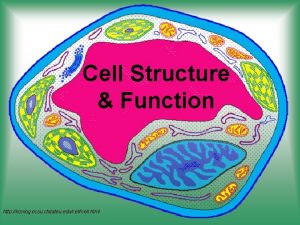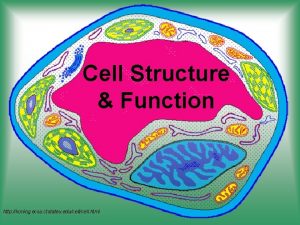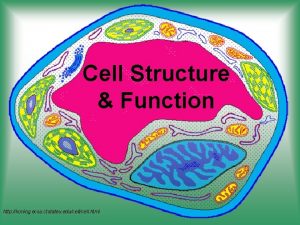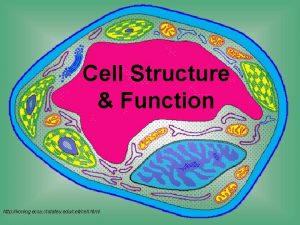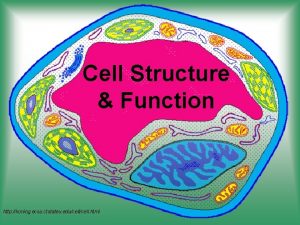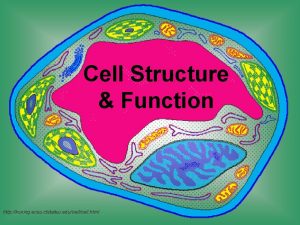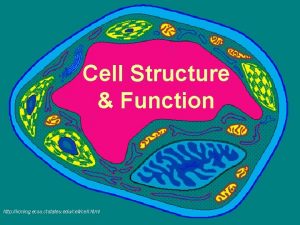Cell Structure Function http koning ecsu ctstateu educell























- Slides: 23

Cell Structure & Function http: //koning. ecsu. ctstateu. edu/cell. html

Definition of Cell A cell is the smallest unit that is capable of performing life functions.

Examples of Cells Amoeba Plant Cell Red Blood Cell Nerve Cell

Organelles • Organelles are the parts of the cell that perform different functions. • There are 11 main organelles (9 for animal cells)

“Typical” Animal Cell http: //web. jjay. cuny. edu/~acarpi/NSC/images/cell. gif

“Typical” Plant Cell http: //waynesword. palomar. edu/images/plant 3. gif

Cell Parts Organelles

Surrounding the Cell

Cell Wall • Gives shape and support to cell • Plants and protists, like algae, have cell walls • Fungi, like yeasts and mushrooms, also have cell walls • Bacteria and Archae also have cell walls, but they are different from plant and fungi • Animal cells DO NOT have cell walls

Cell Membrane • “Gatekeeper” of the cell that controls what can come in or out of the cell • Semi-permeable

Inside the Cell

Nucleus • Controls the cell’s activities • It’s like the “boss” or the “brains” of the cell • DNA is found inside the nucleus

Nuclear Membrane • The “gatekeeper” of the nucleus • Protects the outside of the nucleus • Controls what can go in or out of the nucleus

Chromosomes • Long pieces of DNA inside the nucleus • Come in pairs-one from your mom and one from your dad • Humans have 23 pairs of chromosomes, 46 total chromosomes

Cytoplasm • Soupy, Jell-O like substance that holds all organelles inside the cell in place

Ribosomes • Each cell contains thousands • Make proteins for the cell

Mitochondria • Makes energy (ATP) by breaking down fats and carbohydrates • Controls level of water and other materials in cell • If your mitochondria wasn’t working properly, you wouldn’t be making enough energy and may feel very tired!!

Lysosomes • Digest proteins, fats, and carbohydrates • Clean up cell’s waste by sending them to the cell membrane for disposal

Vacuoles • Storage centers for both plant and animal cells • Much larger in plant cells because of the storage of water • Gives plant cells shape (along with cell wall)

Chloroplast • ONLY found in plant cells • Contains chlorophyll, which is where plants get their green pigment • Where photosynthesis takes place

Match That Part! • • • Cell Membrane Cell Wall Chloroplasts Mitochondria Ribosomes Lysosomes Vacuole Chromosomes Nucleus Nuclear Membrane Cytoplasm • Controls what goes in/out of nucleus • Controls cell activities • Creates proteins for cell • Contains/long pieces of DNA • Gives the cell shape and support • Controls what goes in/out of cell • Contains chlorophyll for photosynthesis • Storage of food and water • Gobbles up the waste • Jell-O like substance that holds parts in place • Produces energy for the cell

How to Write an Analogy • An analogy is a comparison between two seemingly unlike things, using the words like or as and giving an explanation. • For example: -The nucleus is to a cell as Mrs. Opferman is to Webb Bridge Middle School • Now you practice will cell parts! – The nucleus is to a cell as _______is to a ________.

Animal Both Plant
 Ecsu eweb
Ecsu eweb Ecsu banner
Ecsu banner Eastern ct eweb
Eastern ct eweb Shirham
Shirham Emma de koning
Emma de koning Vroulike vorm van swaer
Vroulike vorm van swaer Giovanna koning
Giovanna koning Het jaar van de olifant islam
Het jaar van de olifant islam Poolse koning 1704
Poolse koning 1704 Arjan koning
Arjan koning De rechtmatige koning van alba longa heet
De rechtmatige koning van alba longa heet List of verkleinwoorde
List of verkleinwoorde Koning en koningin
Koning en koningin Geert de koning
Geert de koning Hans peter de koning
Hans peter de koning Function of the cell wall
Function of the cell wall Bacterial cell structure and function
Bacterial cell structure and function Lesson 3 cell structure and function answer key
Lesson 3 cell structure and function answer key Cell structure graphic organizer
Cell structure graphic organizer Plant and animal cell
Plant and animal cell Lesson 3 cell structure and function answer key
Lesson 3 cell structure and function answer key Eukaryotic cell structure
Eukaryotic cell structure Chapter 7 cell structure and function section review 7-2
Chapter 7 cell structure and function section review 7-2 Cell structure and function graphic organizer
Cell structure and function graphic organizer


